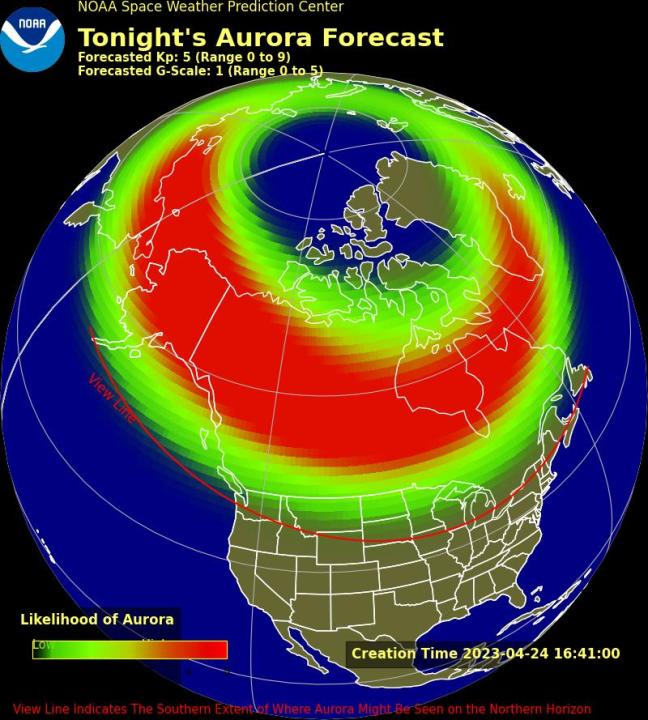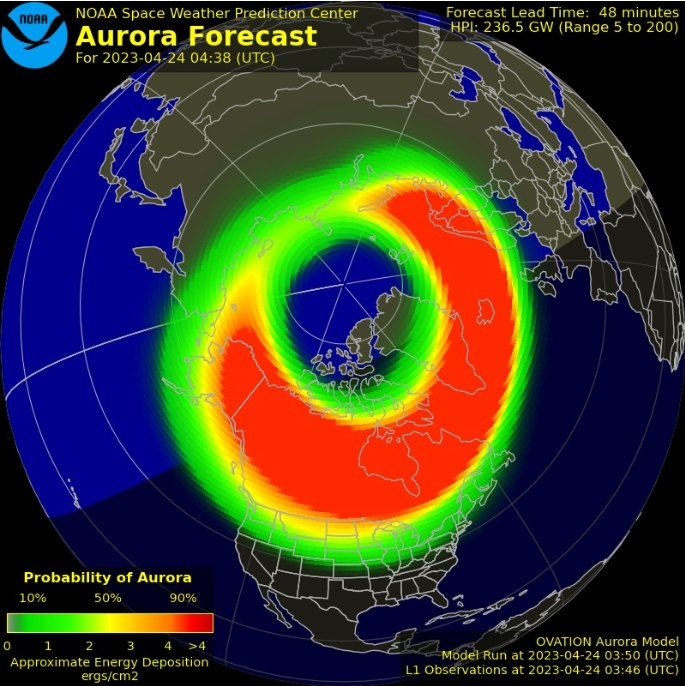Northern lights visible ‘as far south as Alabama’ Sunday
Testing on staging11
(NEXSTAR) – Many Americans will be rewarded with a treat Monday night if they stay up late, cross their fingers for clear skies, and look up. The northern lights will be visible for a second night in a row in several U.S. states.
The dazzling display is thanks to a severe geomagnetic storm that erupted Friday. The effects of the storm were so strong Sunday night, that the aurora was possibly “visible as far south as Alabama and northern California,” the National Oceanic and Atmospheric Administration said.
The storm was caused by a coronal mass ejections, or CME. CMEs are explosions of plasma and magnetic material from the Sun that can reach Earth in as little as 15 to 18 hours, NOAA explains. Slower CMEs, like the one observed Friday, can take days to impact us.
Sunday night’s events qualified as a “G4” rating on NOAA’s space weather scale. Monday night’s events are expected to be weaker. A NOAA spokesperson told Nexstar Monday afternoon that a “G2 Watch” was in effect.
Who has a chance at seeing the northern lights Monday night?
As of 1 p.m. Eastern Monday, the forecast predicted visible northern lights in the skies above parts of Washington, Idaho, Montana, Wyoming, North Dakota, South Dakota, Minnesota, Iowa, Wisconsin, Michigan, New York, Vermont, New Hampshire and Maine.
The northern lights are best observed away from city lights, which can drown out the aurora.

The red line that cuts across the U.S. on the map (above) is the “view line,” which shows the southernmost points where the aurora is forecast to be seen.
A NOAA spokesperson emphasized Monday night’s aurora forecast was an “evolving situation,” and the view line could shift. The agency updates its space weather predictions regularly on its site.
The strength of Sunday night’s space weather event exceeded initial expectations.
The map (below) shows roughly how far south the phenomenon extended at its peak around 12:30 a.m. Eastern time.

The strength of solar storm activity was expected to diminish further on Tuesday.
This is just the latest round of northern lights that have been visible across the northern U.S. this year. It’s all thanks to the sun flipping its magnetic poles, an activity it does over an 11-year period.
“We’re right in the middle of that transition right now, we’re approaching it. When we hit the middle we call it solar maximum. It’s when we have the most sunspots, it’s when we get the most solar flares and eruptions,” Bill Murtagh, the Program Coordinator for NOAA’s Space Weather Prediction Center, told Nexstar’s WROC.
CMEs are often seen during this process, which have contributed to recent auroras. CMEs can create currents in Earth’s magnetic fields that send particles to the North and South Poles. When those particles interact with oxygen and nitrogen, they can create auroras.
The stronger those CMEs are, Murtagh explains, the further south the northern lights are visible.
“If you missed the activity a couple of weeks, last week and a few weeks ago, just know that we are ramping up to the solar maximum – we’re expecting it to occur between 2024-25 so essentially stay tuned, there’s more to come,” said Murtagh.